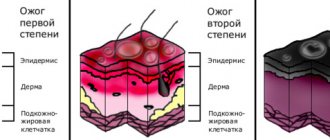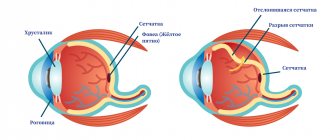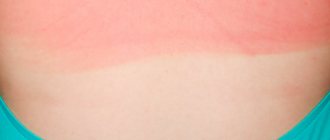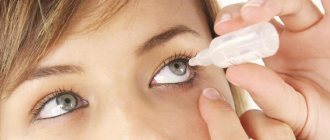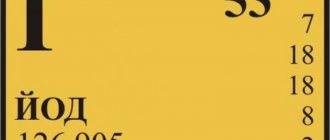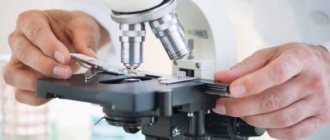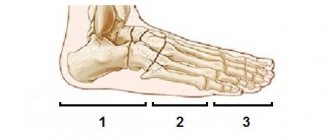Last update: 02/21/2021
The most common burns are household burns, for example, burns from electricity, boiling water and, of course, burns from chemicals and acid. An acid burn occurs when certain chemicals come into contact with the skin or mucous membranes. Chemical burns of acid to the skin of the face, hands, esophagus, larynx, eyes, and groin area are considered especially dangerous.
Classification of injury
To determine what treatment is necessary, you need to briefly describe what degrees of damage are distinguished:
- First degree burn . Redness, slight pain and swelling appear in the superficial layers of the epidermis.
- Thermal wound II degree . Severe redness, swelling, detachment of the damaged layer, formation of blisters filled with yellow liquid. The affected area heals in 11-15 days, skin pigmentation can persist for 2.5-3 weeks.
Wounds of the first two degrees are considered superficial. Their treatment is possible on an outpatient basis. They are able to heal with conservative treatment.
- IIIA degree burns are accompanied by damage to the epidermis and dermis. A light-colored scab forms. Beneath it there are noticeable pink areas - the papillae of the dermis. As the scab moves away or changes, areas covered with epithelium appear in patches. Recovery occurs after 3-6 weeks. The result is a rough scar.
- IIIB degree : skin damage, muscles are often injured. The wound is cleared of dead tissue after 4-6 weeks.
- IV degree is the most prognostically unfavorable and severe. These injuries affect the fascia, muscles, tendons and bones. The scab is thick and charring may occur. Possibly accompanied by purulent complications such as arthritis, abscesses and phlegmon.
Lesions of IIIB and IV degrees are deep wounds that require hospital stay and surgical treatment, as well as the issue of skin restoration using skin grafting. It is necessary to seek specialized help and rational treatment from appropriate specialists without delay.
Lesions of IIIB and IV degrees require hospital stay and surgical treatment.
Types of chemical burns
Taking into account the characteristics of the damaging substance, the following types of damage are distinguished:
- Acidic.
When it comes into contact with the skin, the acid causes the protein to coagulate. As the protein breaks down, it forms a dense crust that prevents the substance from penetrating deep into the tissue. Therefore, such burns are usually shallow. - Alkaline.
Improper handling of caustic soda, quicklime, and ammonia leads to serious consequences. The aggressive substance corrodes tissue, causing deep damage. Such wounds heal more slowly than other burns. - Burns from heavy metal salts.
Less dangerous compared to previous species. Damage is limited to the outer layer of the skin. - Phosphoric.
Upon contact with the skin, the substance ignites, leaving behind a deep wound.
In the absence of first medical aid, the substance continues to destroy the integrity of the integument. Removing the chemical from the skin is not enough to stop the reaction; only inactivation will help.
Complications
A more serious condition in the case of deep burns occurs if they occupy more than 5-11% of the body or the total burn area is more than 20%, then in this case burn disease occurs. This disease is associated with loss of skin and profound impairment of their functions (protection against infection, loss of pain and tactile sensitivity, maintaining water balance, thermoregulation). A serious condition requires a systematic approach and comprehensive treatment aimed at preserving the life of the victim, being in intensive care conditions and a multidisciplinary approach of specialists. It is important to note that for children under one year old, 3-5% of the burn area is sufficient for this complication to appear.
A burn is tissue damage that occurs under the influence of high temperature, electric current, acids, alkalis or ionizing radiation. Accordingly, thermal, electrical, chemical and radiation burns are distinguished. Thermal burns are the most common, accounting for 90-95% of all burns.
The severity of the burn depends on the depth of tissue damage and the area of its spread.
When 10% of the body area is affected, severe general phenomena called burn shock and burn disease occur. Painful shock causes changes in the central nervous system, and evaporation of the liquid part of the blood (plasma) from the surface of the burn and poisoning of the body with decay products of dead tissue disrupt the functions of internal organs.
First aid depending on the degree of burn
1st degree burn: treat the burn surface with alcohol or vodka, cover with a sterile cloth and apply cold, give painkiller medicine. The use of cold is especially effective in the first minutes after a burn and in most cases avoids burn shock.
2nd-4th degree burns: do not open the blisters, and do not cut off the opened ones, but carefully apply them to the wound. You can treat the burn surface with foaming aerosols, cover with a sterile napkin and apply cold, give a painkiller and drink plenty of fluids until the ambulance arrives.
Panthenol aerosol and others are applied to burn wounds.
Forbidden:
To quickly stop the action of chemical agents that have come into contact with the skin, the affected surface is washed with running water for 10-30 minutes. Then, for burns with acids, wash with sodium bicarbonate solution; for burns with alkalis, wash with a weak solution of acetic acid and apply an aseptic bandage.
With a large area of burns, measures must be taken to prevent shock. To do this, the victim must be positioned so that he is less bothered by pain, and provided with warmth and plenty of fluids. You can give hot tea or coffee.
Burn of the esophagus and first aid for it
A burn to the esophagus occurs due to unintentional or intentional ingestion of an aggressive liquid (acid or alkali). Immediately after swallowing, burning pain occurs along the esophagus and in the epigastric region, intense salivation, and vomiting. With concomitant burns of the larynx and vocal cords, hoarseness, difficulty breathing, and asphyxia appear. The victims are pale, frightened, breathing and heartbeat are rapid, swallowing is impossible. The development of shock with symptoms of burn toxemia cannot be ruled out: hyperthermia, arterial hypotension, muscle twitching, the appearance of agitation with delirium.
Urgent Care. Clean and rinse your mouth. For acid burns, give 2% solution of sodium bicarbonate, burnt magnesia, almagel to drink; for burns with alkalis - 1% acetic acid solution. To prevent shock, analgesics are administered, and to relieve esophageal spasm - atropine, papaverine, ganglion blockers. Emergency hospitalization.
First aid for chemical burns.
First aid for burns with acid or alkali consists of immediately washing the affected surface with a stream of water to reduce the concentration of the acid or alkali and stop their action.
After washing with water, it is necessary to begin neutralizing the acid residues.
2% solution of baking soda, and for burns with alkali - 2% solution of acetic or citric acid.
Sunstroke or heatstroke - first aid
Emergency care for sunstroke and heatstroke should be aimed at cooling the body as quickly as possible. For this purpose, both general (immersion in a bath of water at 18-20°C, wetting the victim’s skin with water at room temperature and blowing with warm air) and local hypothermia (ice on the head, axillary and groin areas, wiping with sponges moistened with alcohol) are used. When cooling, the victim often experiences motor and mental agitation.
First aid: put the victim in the shade, in a cool place in a horizontal position: remove clothes, free breathing; provide access to fresh air; place in a cool place; unbutton clothes; improve ventilation.
It is unacceptable to drink water, as this will further increase sweating and lead to a rise in body temperature and increased heart rate.
If breathing stops or is suddenly disrupted, it is necessary to start mechanical ventilation. When the patient comes to his senses, give him a cool, plentiful drink (strongly brewed iced tea).
First aid for a thermal wound
First of all, when you receive a wound, you should not panic. If you are at home, to alleviate the condition, it is enough to immerse the affected areas in cold water until the pain stops . In case of a burn, your first aid kit should have the following items:
- Panthenol 5% in the form of cream or aerosol. Among the agents that can improve microcirculatory disorders and wound cooling, 5% water-soluble anilocaine ointment “Anikol” is also used. The use of antioxidants, for example Soderm ointment, vitamin E promotes faster recovery of the affected skin area.
- Sterile bandage to cover the wound.
- Hydrogen peroxide 3% or another antiseptic if the burn also causes contamination of the wound. Important! If the wound comes into contact with the ground, vaccination against tetanus is necessary.
Modern headbands
There are a huge number of new dressings that can be used at home to promote rapid healing. The main difference from a regular bandage is that they create a favorable microclimate in the wound. After all, if the affected area of the skin dries completely, it will not speed up healing.
Branolind N with Peruvian balsam
The patch has a specific odor; it is used for wounds of 1-2 degrees; it cannot be used for necrotic damage. You can change the bandage once every two days. A contraindication is an allergic reaction to the patch, manifested by redness and swelling.
Hydrocoll
Gel dressing, which is used for 1-2 degree burns. The package contains a 15x15 cm bandage that can be adjusted to the size of the wound. The bandage should cover the damaged area by 1-2 cm.
Silkoplast Comfort IT-Burn
Used for grade 1-2 wounds, relieves pain and promotes rapid healing.
Experts' opinion
Clinical studies conducted with the participation of the Union of Pediatricians of Russia made it possible to establish that:
- When using the complex of products, the level of skin moisture decreased by 4% in comparison, and in the group that used Placebo, the level of moisture decreased by 9%.
- When using the complex of products, the level of skin acidity increased by 1% in comparison, and in the group using Placebo, the acidity level decreased by 1%, while in the second group of subjects the initial value of skin acidity was significantly higher.
- Skin moisture levels decreased slightly and remained in the dehydration zone, however, when used, the indicators remained significantly better than those of the group using Placebo. The level of sebum in general was initially low, and as a result, in the group that used alternative skin care products, it decreased by almost 2 times, and in the group that used it remained at the same level.
- When assessing the dynamics of the epidermal barrier indicators using the EASI diagnostic scale, in the group of patients who used the product, the average percentage of improvement when completing the full course was 28% and only 9% of patients remained unchanged, while in the group who used “Placebo”, 13% of patients showed improvement and 56% of patients without change.
Sources:
- Ratner Desiri, Avram M.R., Avram M.M., Procedures in Dermatology. Clinical cosmetology, Publishing house: GEOTAR-Media, 2019
- Sukolin Gennady Ivanovich, Clinical dermatology. A short guide to the diagnosis and treatment of dermatoses, publishing house: Notabene, 2017
- Schneiderman Paul, Grossman Mark, Differential diagnosis in dermatology. Atlas, Publishing house: Binom, 2017
